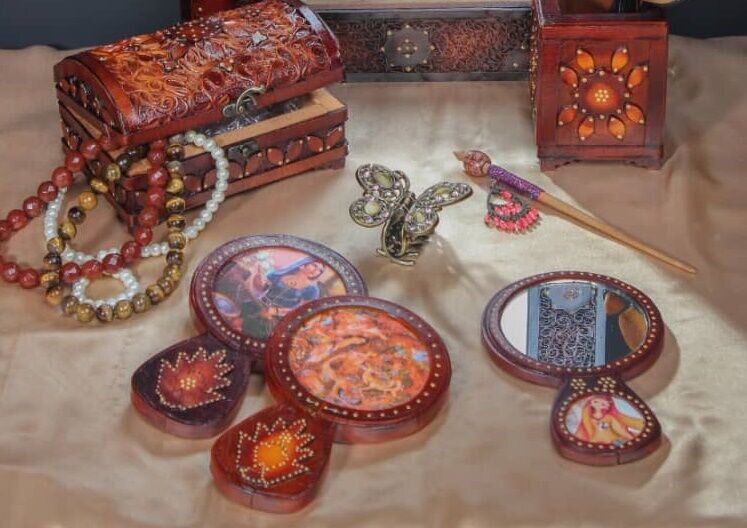Iranian crafters honored at Afghanistan Art Week

TEHRAN –Two crafters from the northern Iranian province of Mazandaran have been honored at the Afghanistan Art Week, which came to an end in Tehran on Friday.
Asieh Tahani in the field of leather engraving and Mojdeh Moshafi in doll-making were honored at the weeklong virtual festival organized by the Iranian National Commission for UNESCO, IRNA reported on Monday.
A large number of Afghan artists and cultural figures as well as Iranian artists and crafters attended the event to hold panel discussions and showcase their works.
Literature, culture, music, handicrafts, Persian calligraphy, painting, miniature, and graphics were among the subjects discussed during the event, according to organizers.
The Afghanistan Art Week was organized in collaboration with the Embassy of Afghanistan on the theme of “My Beloved, Where Are You?” to express sympathy with the victims of the ISIS terrorist attack on Kabul University in early November.
Several gunmen attacked Kabul University, shooting at students in their classrooms and clashing with security forces for hours. Some of the students had calls from their mothers and fathers. One of the victims had 142 missed calls, and there was a final message that read, “My beloved, where are you?”
Mazandaran has long been a cradle of ethnic handicrafts with some 70 fields currently being practiced across by about 12,000 crafters.
Iran ranks first globally in the number of cities and villages registered by the World Crafts Council (WCC). In late January, the cities of Shiraz, Malayer, and Zanjan and the village of Qassemabad were designated by the WCC- Asia Pacific Region, putting Iran’s number of world crafts cities and villages from ten to 14.
Shiraz was named a “world city of [diverse] handicrafts”. Malayer was made a global hub for woodcarving and carved-wood furniture. Zanjan gained the title of a “world city of filigree”. And Qassemabad village, which is nationally known for its traditional costumes, was also promoted to a world hub of handicrafts. Chador Shab, a kind of homemade outer-garment for women, was, however, the main subject for the WCC assessment for the village.
Iran exported $523 million worth of handicrafts during the past calendar year 1398 (ended March 19). Of the figure, some $273 million worth of handicrafts were exported officially through customs, and about $250 million was earned via suitcase trade (allowed for customs-free and tax-free transfer) through various provinces, according to data provided by the Ministry of Cultural Heritage, Tourism and Handicrafts.
Ceramics, pottery vessels, handwoven cloths as well as personal ornamentations with precious and semi-precious gemstones are traditionally exported to Iraq, Afghanistan, Germany, the U.S., the UK, and other countries.
ABU/AFM
Leave a Comment